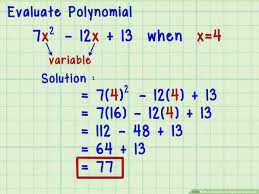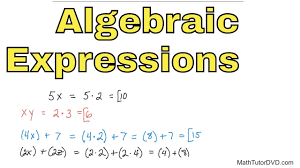Evaluate the Expression Calculator: Your Ultimate Guide to Precision and Speed



Chính Sách Vận Chuyển Và Đổi Trả Hàng
Miễn phí vận chuyển mọi đơn hàng từ 500K
- Phí ship mặc trong nước 50K
- Thời gian nhận hàng 2-3 ngày trong tuần
- Giao hàng hỏa tốc trong 24h
- Hoàn trả hàng trong 30 ngày nếu không hài lòng
Mô tả sản phẩm
In the vast landscape of mathematics, science, engineering, and even daily life, we constantly encounter expressions that require simplification or calculation to yield a definitive value. From basic arithmetic problems to complex algebraic equations, the need to accurately and efficiently determine the result of a given expression is paramount. This is where an evaluate the expression calculator emerges as an indispensable tool, transforming tedious manual computations into instantaneous, error-free operations. This comprehensive guide will delve into the essence of evaluating expressions, explore the functionalities and benefits of such calculators, and provide insights into leveraging them for maximum impact in various domains.
What Does It Mean to 'Evaluate an Expression'?
Before diving into the mechanics of the calculator, it's crucial to understand the fundamental concept of evaluating an expression. An "expression" in mathematics is a finite combination of symbols that is well-formed according to rules that depend on the context. These symbols can include numbers (constants), variables, operations (like addition, subtraction, multiplication, division), functions (like sine, cosine, logarithm), and grouping symbols (parentheses, brackets).
To "evaluate" an expression means to find its single, definitive value. This process involves performing all the indicated operations in the correct order until no further calculations can be made, resulting in a numerical answer, a truth value (for logical expressions), or a simplified form. For instance, evaluating the expression 5 + 3 * 2 requires following the order of operations, where multiplication is performed before addition, yielding 5 + 6 = 11. Without an understanding of this process, errors are highly probable, especially as expressions become more intricate.
The Core Functionality of an Evaluate the Expression Calculator
An evaluate the expression calculator is designed to take an input string representing a mathematical or logical expression and return its computed value. Its internal logic mirrors the human process of evaluation but executes it with unparalleled speed and accuracy. The sophistication of these calculators varies, ranging from basic arithmetic solvers to advanced scientific and symbolic calculators capable of handling highly complex inputs.
Adherence to Order of Operations (PEMDAS/BODMAS)
The cornerstone of any reliable evaluate the expression calculator is its strict adherence to the universally accepted order of operations. This mnemonic, often remembered as PEMDAS (Parentheses, Exponents, Multiplication and Division, Addition and Subtraction) or BODMAS (Brackets, Orders, Division and Multiplication, Addition and Subtraction), dictates the sequence in which operations must be performed. A calculator automates this critical step, parsing the expression and executing operations in the precise order, eliminating the ambiguity and common errors associated with manual calculation. This built-in logic ensures that 3 + 4 * 5 is correctly interpreted as 3 + (4 * 5) = 23, not (3 + 4) * 5 = 35.
Handling Different Expression Types
Modern expression evaluators are incredibly versatile, capable of processing a wide array of expression types:
- Arithmetic Expressions: These are the most basic, involving numbers and standard operations (+, -, *, /). Advanced arithmetic includes fractions, decimals, and percentages.
- Algebraic Expressions: When expressions include variables (e.g.,
2x + 5), the calculator can evaluate them if values are assigned to those variables (e.g., if x=3, then2*3 + 5 = 11). More sophisticated calculators can perform symbolic evaluation or simplification without variable assignment. - Trigonometric Expressions: Involving functions like sine (sin), cosine (cos), tangent (tan), and their inverses. These calculators must correctly handle angle units (degrees or radians). For example, evaluating
sin(30 degrees). - Logarithmic Expressions: Dealing with natural logarithms (ln) and common logarithms (log base 10), as well as logarithms of arbitrary bases. E.g.,
log(100)orln(e^2). - Exponential Expressions: Involving powers and roots (e.g.,
x^yorsqrt(x)). - Complex Number Expressions: Some advanced calculators can evaluate expressions involving imaginary numbers (e.g.,
(2 + 3i) * (1 - i)). - Boolean/Logical Expressions: For specific applications, calculators can evaluate expressions involving logical operators (AND, OR, NOT, XOR) to determine a truth value (True/False).
Error Detection and Reporting
A highly valuable feature of these calculators is their ability to identify and report errors. If an expression is syntactically incorrect (e.g., unmatched parentheses, invalid characters, division by zero, or domain errors like taking the square root of a negative number in real numbers), the calculator will typically flag the error rather than providing an incorrect result. This immediate feedback helps users correct their input and learn about common mathematical pitfalls.
User Interface and Accessibility
The design of an evaluate the expression calculator's user interface significantly impacts its usability. Good calculators offer intuitive input methods, clear display of results (sometimes with precision control), and features like expression history, memory functions, and the ability to define custom variables or functions. They are available across various platforms, including dedicated handheld devices, desktop software, web applications, and mobile apps, making them accessible to a broad audience.
Why Use an Evaluate the Expression Calculator? Benefits Explored
The advantages of employing an evaluate the expression calculator are manifold, extending beyond mere convenience:
Speed and Efficiency
The most immediate benefit is the unparalleled speed. Complex calculations that might take minutes or even hours to perform manually, with a high risk of error, are completed in fractions of a second. This efficiency is critical in time-sensitive environments, from academic exams to professional engineering design.
Accuracy and Precision
Human error is an inherent part of manual calculation, especially with long strings of numbers and operations. A calculator eliminates this variable, performing computations with exact precision up to its internal limits. This guarantees reliable results, which is vital in fields where even minor inaccuracies can have significant consequences.
Handling Complexity
Some expressions are so long, nested, or involve such large numbers or intricate functions that manual evaluation becomes impractical or nearly impossible. An evaluate the expression calculator excels at breaking down and solving these complex problems, handling multiple layers of parentheses, various function calls, and very large or very small numbers with ease.
Learning Aid
For students, these calculators serve as an excellent learning aid. They can verify answers to homework problems, helping students identify where they might have made a mistake in their manual calculations. Some advanced calculators even offer step-by-step solutions, allowing users to trace the evaluation process and solidify their understanding of the order of operations and mathematical principles.
Versatility
The utility of an expression evaluator transcends specific disciplines. Whether you're a high school student learning algebra, a scientist analyzing experimental data, an engineer designing structures, or a finance professional calculating investments, the ability to quickly and accurately evaluate expressions is universally valuable.
Convenience
With online and mobile versions readily available, an evaluate the expression calculator is always within reach. This accessibility means complex computations can be performed anytime, anywhere, without needing specialized physical tools.
Practical Applications of Evaluating Expressions (and using the calculator)
The need to evaluate expressions is pervasive across numerous fields:
- Mathematics Education: Students use them to solve equations, verify answers for calculus problems, trigonometry exercises, and basic arithmetic.
- Science (Physics, Chemistry, Biology): Scientists frequently evaluate formulas to derive physical quantities, chemical reactions, or biological models based on experimental data.
- Engineering: Engineers rely heavily on evaluating complex expressions for structural analysis, circuit design, fluid dynamics, and countless other calculations critical to their projects.
- Finance: Professionals use them to calculate interest rates, loan payments, investment returns, bond yields, and to model financial scenarios.
- Computer Science and Programming: Programmers often evaluate expressions within code, and developers use expression evaluators for scripting, debugging, or creating interactive applications where user input needs dynamic calculation.
- Everyday Life: From calculating recipe ingredient adjustments to determining travel costs or personal budgeting, evaluating expressions is a subtle but constant part of daily decision-making.
Choosing the Right Evaluate the Expression Calculator
With a multitude of options available, selecting the appropriate evaluate the expression calculator depends on your specific needs:
- Online vs. Offline: Online calculators offer convenience and often more advanced features without installation, while offline software or handheld calculators provide portability and independence from an internet connection.
- Basic vs. Scientific vs. Graphing vs. Symbolic:
- Basic: For simple arithmetic.
- Scientific: Essential for trigonometry, logarithms, exponents, and more complex functions.
- Graphing: Capable of evaluating expressions and then plotting their results on a graph, useful for visualizing functions.
- Symbolic: Can manipulate expressions algebraically (e.g., factor, expand, differentiate, integrate) without necessarily assigning numerical values, highly valued in advanced mathematics.
- User Interface: Look for an intuitive, clean interface that makes inputting complex expressions easy and displays results clearly.
- Specific Features: Consider if you need features like step-by-step solutions, unit conversions, constant libraries, or programming capabilities.
- Reputation/Reviews: Check user reviews and the calculator's reputation for accuracy and reliability.
Tips for Maximizing Your Evaluate the Expression Calculator's Potential
To get the most out of your expression evaluator, keep the following tips in mind:
- Understand Your Input: Always double-check the expression you've entered. A single misplaced parenthesis or incorrect operator can lead to an entirely wrong result.
- Master Order of Operations: While the calculator handles it, knowing PEMDAS/BODMAS yourself helps you structure your input correctly and troubleshoot errors if the output isn't what you expect.
- Familiarize with Syntax: Different calculators might have slightly different ways of representing functions or operations (e.g.,
sqrt()vs.√,^vs.**for exponents). Read the calculator's documentation or help section. - Utilize Advanced Features: Explore memory functions, variable assignment, and predefined constants (like pi or e) to streamline repetitive or complex calculations.
- Don't Over-rely (for learning): Especially for students, use the calculator as a verification tool or for complex computations after attempting manual solutions. Over-reliance can hinder the development of fundamental mathematical skills.
The Future of Expression Evaluation Tools
The evolution of evaluate the expression calculators is ongoing. We can anticipate even more sophisticated features:
- AI and Natural Language Processing: Future calculators may allow users to input expressions using natural language ("what is 2 plus 3 times 4?") and intelligently interpret complex mathematical statements.
- Enhanced Step-by-Step Solutions: More detailed and customizable step-by-step breakdowns, potentially with explanations for each step, will further aid learning.
- Integrated Visualizations: Seamless integration with graphing and data visualization tools, providing instant graphical representations of evaluated functions or expressions.
- Cross-Platform Integration: Greater synergy with other software, programming environments, and cloud services for a more integrated computational workflow.
Conclusion
An evaluate the expression calculator is far more than a simple number-crunching machine; it is a powerful computational ally that empowers individuals across all disciplines. By automating the meticulous process of applying the order of operations and handling diverse mathematical functions, these tools provide unparalleled speed, accuracy, and efficiency. Whether you're solving a complex scientific problem, balancing your finances, or simply verifying a homework answer, embracing the capabilities of an expression calculator can significantly enhance your productivity and understanding. In an increasingly data-driven world, the ability to quickly and reliably evaluate expressions is an invaluable skill, and the right calculator is the key to unlocking that potential.